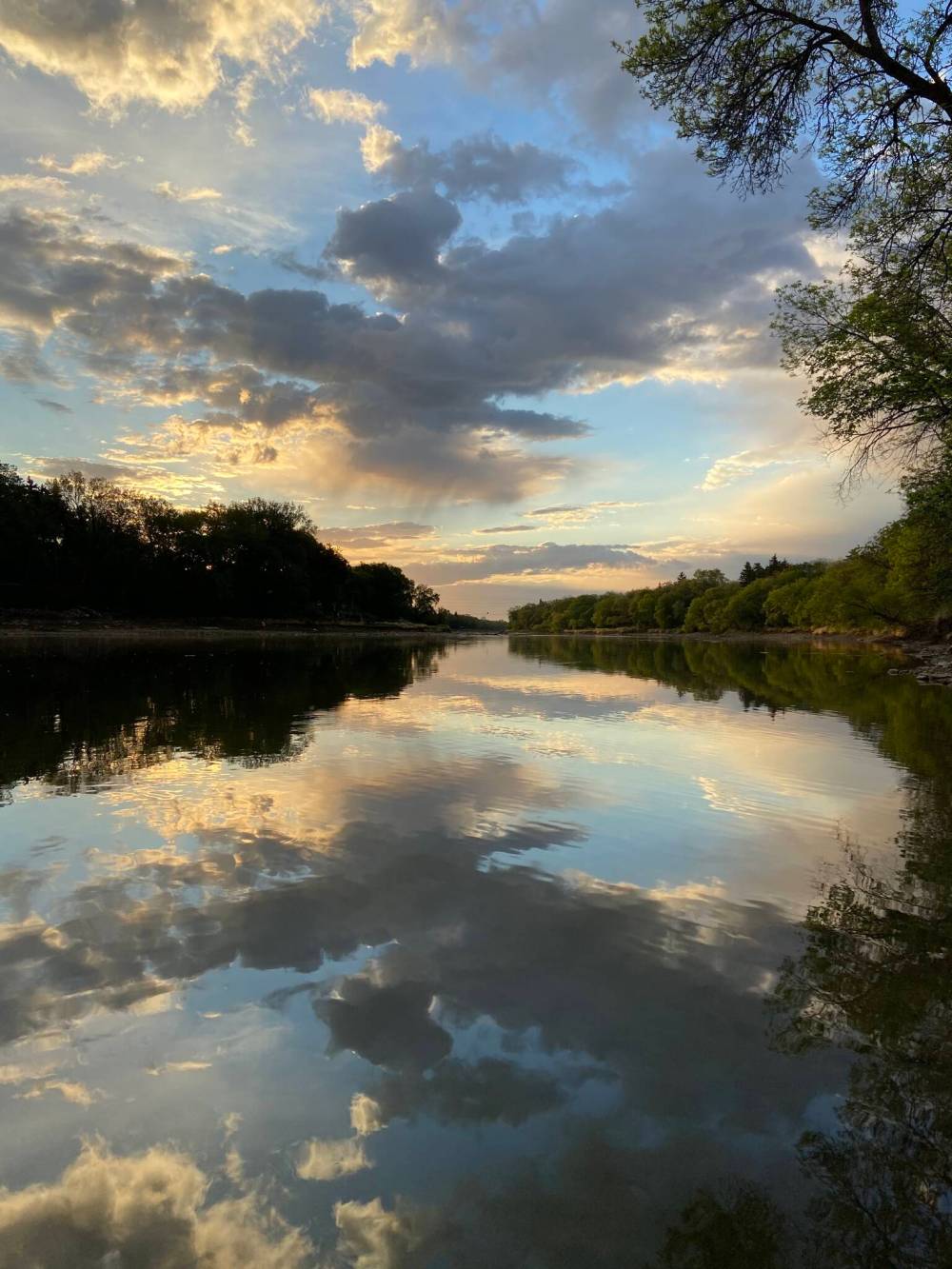A light take on the science of the solstice
Time to celebrate the return of longer days, and find ways to cope with the shorter ones
Advertisement
Read this article for free:
or
Already have an account? Log in here »
To continue reading, please subscribe:
Monthly Digital Subscription
$0 for the first 4 weeks*
- Enjoy unlimited reading on winnipegfreepress.com
- Read the E-Edition, our digital replica newspaper
- Access News Break, our award-winning app
- Play interactive puzzles
*No charge for 4 weeks then price increases to the regular rate of $19.00 plus GST every four weeks. Offer available to new and qualified returning subscribers only. Cancel any time.
Monthly Digital Subscription
$4.75/week*
- Enjoy unlimited reading on winnipegfreepress.com
- Read the E-Edition, our digital replica newspaper
- Access News Break, our award-winning app
- Play interactive puzzles
*Billed as $19 plus GST every four weeks. Cancel any time.
To continue reading, please subscribe:
Add Free Press access to your Brandon Sun subscription for only an additional
$1 for the first 4 weeks*
*Your next subscription payment will increase by $1.00 and you will be charged $16.99 plus GST for four weeks. After four weeks, your payment will increase to $23.99 plus GST every four weeks.
Read unlimited articles for free today:
or
Already have an account? Log in here »
Hey there, time traveller!
This article was published 19/12/2021 (1436 days ago), so information in it may no longer be current.
When the first rays of sunlight appear on the shortest day of the year this week, Dorota Blumczynska intends to watch from a bridge over the Assiniboine River, just as she has witnessed every other sunrise in 2021.
“It’s about the consistent commitment,” she said of her practice of getting up before dawn to travel from her Charleswood home to the walkway along the Moray Bridge.
“The sun and I have been the constant for each other through the year.”
In these darkest days of December, light becomes a defining aspect our daily existence. We welcome the winter solstice — which occurs at 9:59 a.m. on Tuesday, Dec. 21 — and celebrate it as a marker for when days begin to get longer and hope for long summer nights begins to grow.
The winter solstice happens at the moment the North Pole of the Earth is at the maximum tilt away from the sun.
“When we are oriented to the sun, I think we’re oriented to new beginnings,” said Blumczynska, who began her current position as CEO of Manitoba Museum nearly midway through her year of sunrises.
“You can cast out your dreams and hope and gratitude. You can set your intention, make an offering to the world to give your best self.”
Candles light the way

This is the time of year to light a candle, whether to commemorate religious holidays like Hanukkah or Christmas, or just cast a gentle glow on a dark December night. Most of us don’t think much about candles beyond striking a match and holding the flame to the wick, assuming our tapers and tealights will simply do their jobs.
For candlemaker Lana McCullough of Hartmont Candle Co., the size of wicks and type of wax is a daily preoccupation as she creates a new batch of soy candles in jars at her Gimli home workshop each morning.
“As a maker, what you’re going for is a sensory experience,” said McCullough, a candlemaker for more than two decades.
“You’re going for the soft ambient light that relaxes people.”
Over the years, she has discovered soy wax burns cleaner than paraffin wax and wood wicks perform better than the traditional cotton string. Wood wicks also mimic a flame of a wood burning fireplace.
“You want the wick to be efficient enough so the wax burns to the edge, and you want it to have a nice flame,” she said of optimal candle characteristics.
“You don’t want it to be so hot, so it creates a huge flame and creates soot, and you don’t want it to be so hot so it’s a danger.”
If the candle flame burns too large, she advises blowing it out and trimming back the wick before lighting it again.
But most of all, McCullough wants her customers to enjoy candlelight on these long, dark December evenings.
“There’s something about the flicker of flame and the movement of light that draws you in,” she said.
Lights set the mood

When the curtain rises on a new play, Winnipeg-based lighting designer Scott Henderson intends to draw in the audience by setting the atmosphere on stage with the placement and intensity of lights.
“It’s setting a mood psychologically,” he said of how lighting affects a theatrical production.
“You don’t notice it, but it changes the feeling of what you’re seeing.”
Not only does the University of Winnipeg lighting design instructor illuminate the stage, but he also directs the focus of the audience by beaming light on a particular character or prop and keeping other aspects in shadow.
“You are helping paint a picture on stage, about what you want the audience to see and not see,” said Henderson, honoured by the local theatre community in 2018 with a lifetime achievement award.
During these short winter days, Henderson takes note of the quality of daylight and the angles of the sun, paying attention to the colour of the light. He uses cool light to portray outdoor scenes, and warm light for indoor settings, mimicking what happens outside.
“In December, the bright sunlight feels bit cold, especially if there’s snow,” said Henderson, who designed the lighting for In Time, a recent joint production between Theatre Projects Manitoba and End of the West Collective.
“It has that bluish feeling.”
Science behind the blues

There’s a scientific reason for that bluish feeling, known as Rayleigh scattering, said University of Winnipeg physics professor Russell Mammei. When the sun is high in the sky, the sky is blue because the molecules in the atmosphere repeatedly scatter the blue light. Since sunrises and sunsets occur at low angles in winter, Mammei said we see more orange and red because these warm colours have longer wavelengths and the blue light has been scattered away.
“The longer wavelengths don’t interact with the atmosphere in the same way as the shorter wavelengths,” he said.
Much of physics research is connected with light, with many particle detectors using light in some way, said Mammei. Physicists think of light in terms of its properties and how to use it and manipulate it.
“I think about how light exists — that’s interesting to me — and how light is made,” he said of his academic work.
But even physicists have their existential moments. Mammei is fascinated with how light is different in Winnipeg than his native Texas. After adjusting to Manitoba’s long summer evenings and short winter days, he now also enjoys seeing sundogs, visible on extremely cold days when sunlight reflects off ice crystals suspended in the atmosphere.
In December, when the low angles of the sun blind him on the commute home from university, he also thinks about the relative scarcity of light in winter and how that affects people in his adopted hometown.
“I think it’s the lack of light. We give meaning to the preciousness of light,” he says about living in Manitoba in December.
Be present in the moment

After a year of sunrises, Blumczynska has also pondered light, marvelling how quickly it changes once the sun rises above the horizon. Using her cellphone camera, she’s captured every sunrise, gaining a following on Twitter for her daily photos. She has also inspired a few folks to get up early and photograph the sunrise from their own vantage points, while others send messages thanking her for sharing photos.
Sometimes there’s nothing to see, such as on a recent foggy morning when she made the trip down to the river with her two young daughters.
They couldn’t spot the sun, but when one of her girls started singing “Into the Unknown” from the movie Frozen 2, something shifted for Blumczynska.
“It was a good reminder that things exist when we can’t see them.”
Blumczynska plans to continue her sunrise sojourns into the new year. Some days she stops for only the moment or two to capture a photograph, and other days she wanders the riverbank for as long as her schedule allows.
The practice of meeting the sun daily — at around 8:30 a.m. these days, but shortly after 5 a.m. in mid-June — has profoundly impacted her view of the world. It’s reminded her to watch for the light in the darkness and remember that the sun will rise and set again tomorrow.
“If you’re not looking at the sky at the right moment, you will miss it,” she says of the moment the sun breaks the horizon.
“It’s fleeting. It’s a good reminder to be present.”
Brenda.suderman@freepres.mb.ca


Brenda Suderman has been a columnist in the Saturday paper since 2000, first writing about family entertainment, and about faith and religion since 2006.
Our newsroom depends on a growing audience of readers to power our journalism. If you are not a paid reader, please consider becoming a subscriber.
Our newsroom depends on its audience of readers to power our journalism. Thank you for your support.

